Warning: Undefined array key 0 in /home/u566322744/domains/capitalkeeper.in/public_html/wp-content/plugins/seo-optimized-images/seo-optimized-images.php on line 154
Evolution of Trading Strategies Over the Last Decade: From Discretion to Algorithmic Precision
By CapitalKeeper | Beginner’s Guide | Indian Equities | Market Moves That Matter
📈 Introduction
Over the past decade, the landscape of financial trading has undergone a dramatic transformation. The way traders approach markets today is vastly different from 10 years ago, thanks to technological advancements, data analytics, machine learning, and shifts in regulatory environments.
In this blog, we’ll take a deep dive into the evolution of trading strategies, highlighting key phases, tools, and trends that shaped the way modern portfolios are built and traded today.
🕰️ Phase 1: Manual & Discretionary Trading (2010–2014)
Overview:
In the early part of the 2010s, most retail traders and even some institutional participants relied heavily on discretionary trading. Strategies were primarily based on human judgment, chart patterns, fundamental analysis, and market sentiment.
Key Characteristics:
- Heavy reliance on technical indicators like RSI, MACD, and Bollinger Bands
- Day trading and swing trading based on experience and intuition
- Minimal use of automated tools or scripts
- Emotional trading played a large role in decision-making
Limitations:
- Slower execution
- High emotional bias
- Inconsistent results
⚙️ Phase 2: Rise of Technical Automation (2014–2018)
Overview:
This phase witnessed the entry of semi-automated trading systems, where traders began using tools like TradingView, MetaTrader bots, and Excel-based backtesting strategies.
Key Advancements:
- Increased use of APIs for order placement
- Strategy codification using Pine Script & MetaQuotes
- Popularization of pattern-based screeners and scanners
- Widespread adoption of backtesting
Notable Trends:
- Growing interest in price action trading
- Emergence of community-driven platforms (Reddit, TradingView)
- Retail options trading started gaining traction
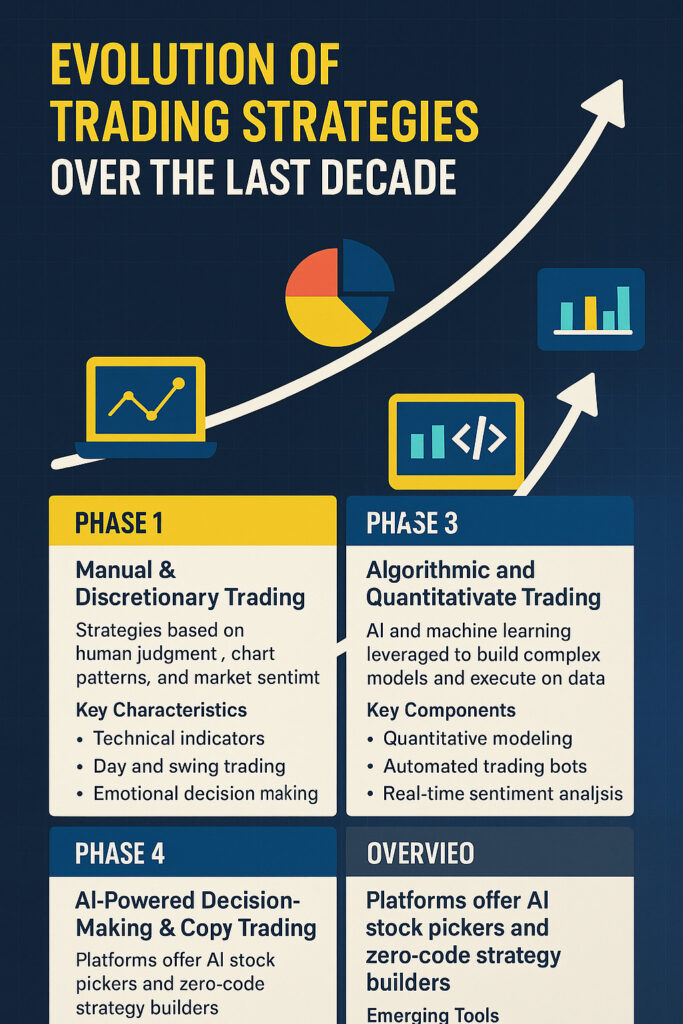
🤖 Phase 3: Algorithmic and Quantitative Trading (2018–2022)
Overview:
The integration of AI and machine learning changed the game entirely. Traders began leveraging massive data sets, real-time analytics, and algo-driven bots to execute complex strategies at scale.
Key Components:
- Quantitative modeling (mean reversion, statistical arbitrage, momentum)
- Use of Python, R, and C++ for strategy building
- Automated bots for scalping, arbitrage, and hedging
- Real-time sentiment analysis using NLP on news and social media
Who Led This Revolution:
- Hedge funds and prop trading firms
- Quant traders and data scientists
- Retail algo platforms like Zerodha Streak, AlgoTest
🌐 Phase 4: AI-Powered Decision-Making & Copy Trading (2022–2025)
Overview:
In the last few years, trading has become more democratized, with platforms offering social trading, AI stock pickers, and zero-code strategy builders.
Emerging Tools:
- GPT-powered financial bots
- AI-based strategy optimization
- Integration of macroeconomic AI forecasting
- Copy trading and leaderboards (e.g., eToro, Dhan, Kuvera)
Benefits:
- Faster decision-making
- Improved accuracy through data convergence
- Access to proven strategies for beginners
📊 Key Shifts in the Last Decade
| Aspect | 2013-14 | 2025 |
|---|---|---|
| Trading Style | Manual & Discretionary | AI/Quant-Driven |
| Tools Used | Excel, Charts | Python, ML, Real-time APIs |
| Execution Speed | Manual Order Placement | High-Frequency Automated Orders |
| Data Usage | Historical & Basic | Big Data & Predictive Analytics |
| Strategy Customization | Limited | Highly Optimized & Adaptive |
📉 Challenges With Modern Strategies
While modern tools offer speed and precision, they’re not without risks:
- Overfitting in algos
- Black-box models (lack of interpretability)
- Flash crashes from high-frequency bots
- Regulatory scrutiny on data usage and insider tech
🔮 What Lies Ahead?
- Blockchain-based trading systems
- Tokenization of strategies as NFTs
- AI-driven macroeconomic prediction models
- Integrated platforms offering real-time insights + trading
✅ Final Thoughts
The last decade has seen an incredible leap from gut-driven trades to data-driven executions. Whether you’re a retail trader or institutional investor, understanding this evolution is crucial to staying ahead.
If you’re still using outdated strategies, it’s time to level up. The future belongs to traders who can blend human intuition with machine intelligence.
🔔 Stay updated with more blogs like this on CapitalKeeper.in
📌 Follow us for daily market insights, stock ideas, and strategy guides.
📌 For more real-time updates, trade setups, and investment insights — follow us on [Telegram] and [WhatsApp Channel] subscribe to our newsletter!

📌 Disclaimer
The content provided on CapitalKeeper.in is for informational and educational purposes only and does not constitute investment, trading, or financial advice. While we strive to present accurate and up-to-date market data and analysis, we make no warranties or representations regarding the completeness, reliability, or accuracy of the information.
Stock market investments are subject to market risks, and readers/investors are advised to conduct their own due diligence or consult a SEBI-registered financial advisor before making any investment decisions. CapitalKeeper and its authors are not liable for any loss or damage, direct or indirect, arising from the use of this information.
All views and opinions expressed are personal and do not reflect the official policy or position of any agency or organization. Past performance is not indicative of future results.By using this website, you agree to the terms of this disclaimer.
Ranjit Sahoo
Founder & Chief Editor – CapitalKeeper.in
Ranjit Sahoo is the visionary behind CapitalKeeper.in, a leading platform for real-time market insights, technical analysis, and investment strategies. With a strong focus on Nifty, Bank Nifty, sector trends, and commodities, she delivers in-depth research that helps traders and investors make informed decisions.
Passionate about financial literacy, Ranjit blends technical precision with market storytelling, ensuring even complex concepts are accessible to readers of all levels. Her work covers pre-market analysis, intraday strategies, thematic investing, and long-term portfolio trends.
When he’s not decoding charts, Ranjit enjoys exploring coastal getaways and keeping an eye on emerging business themes.
📌 Follow Ranjit on:
LinkedIn | Twitter/X | Instagram | ✉️ contact@capitalkeeper.in
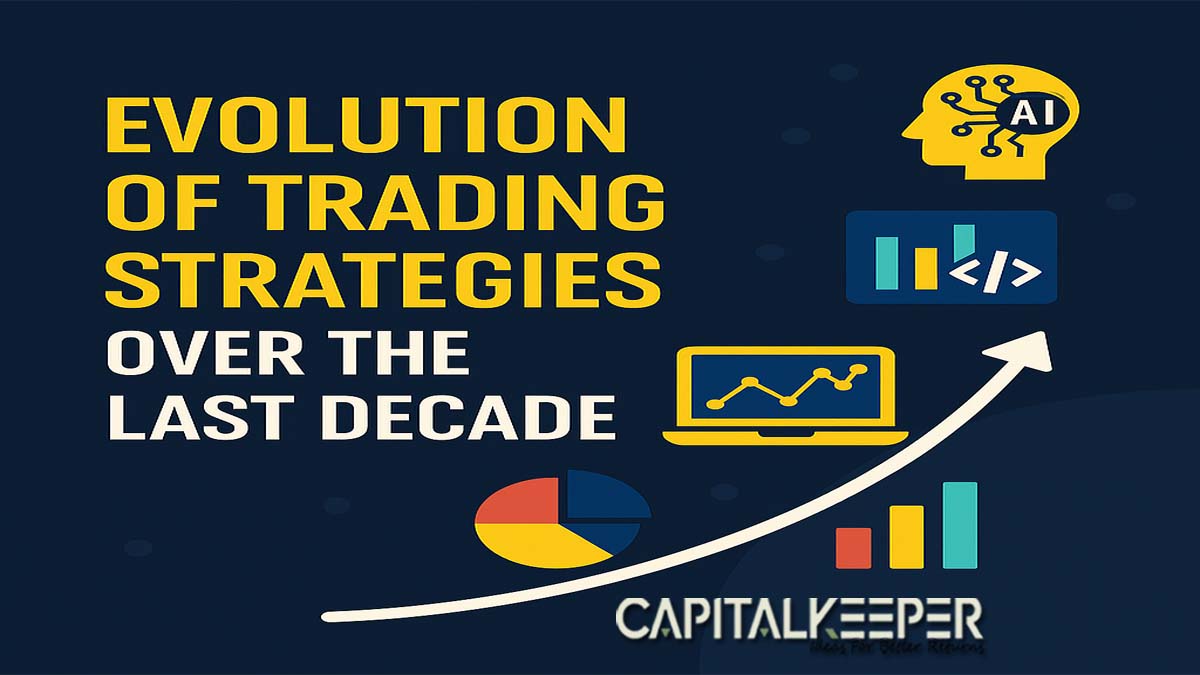

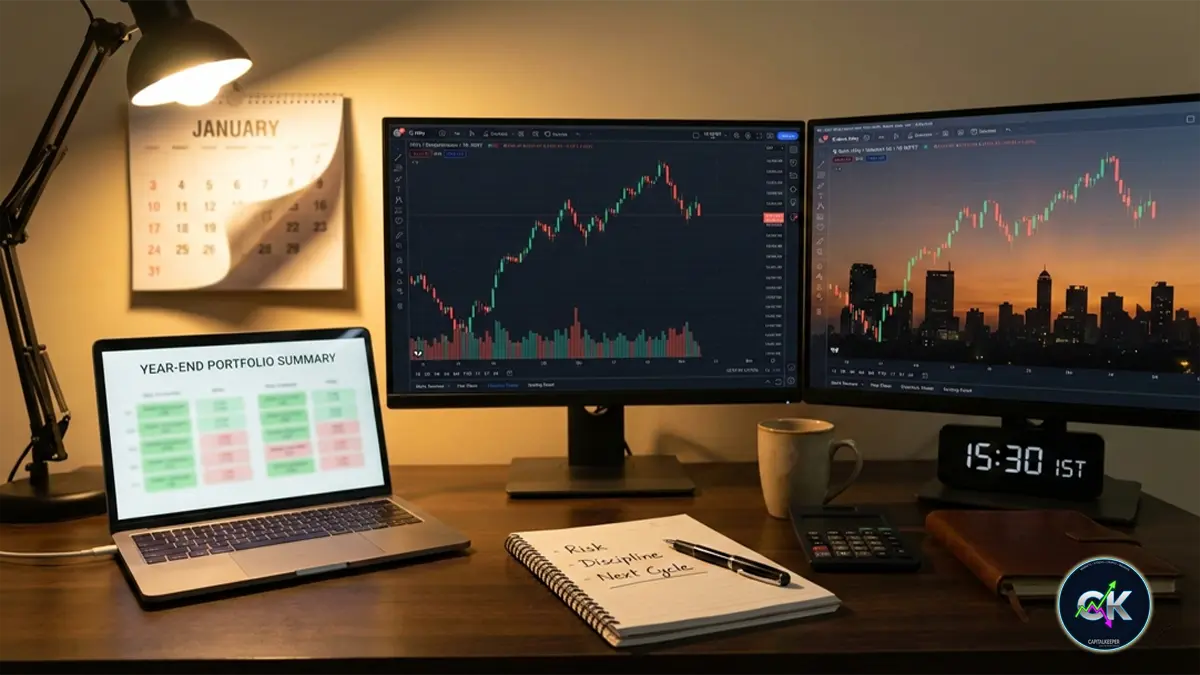

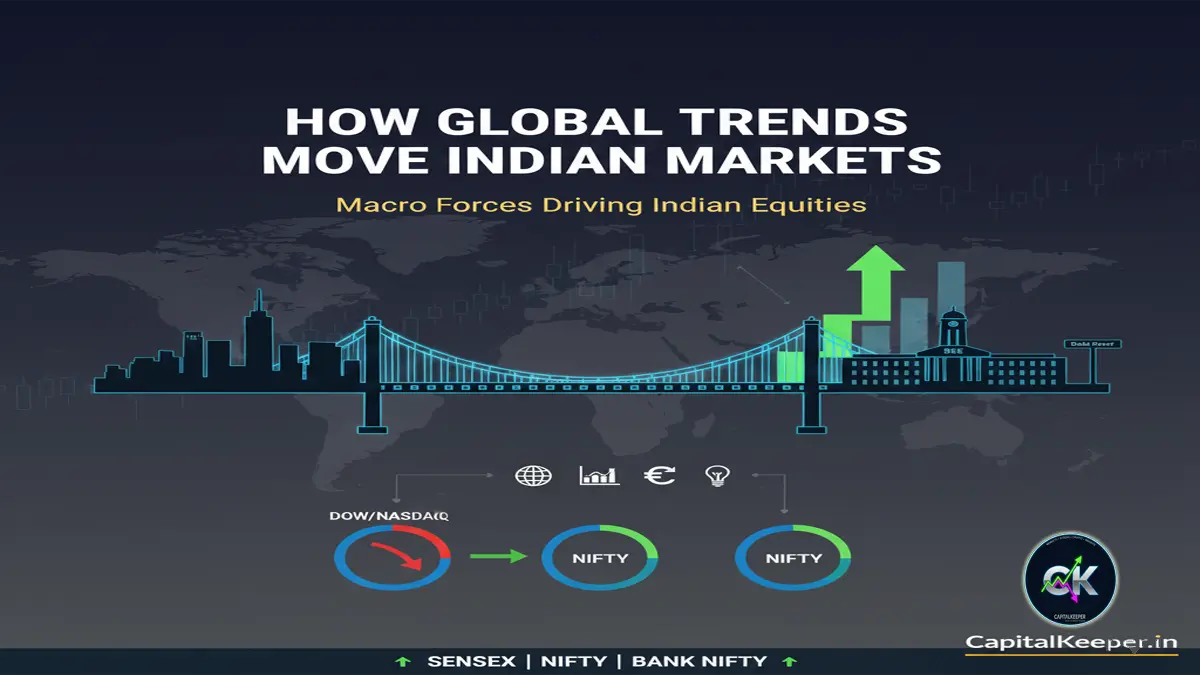





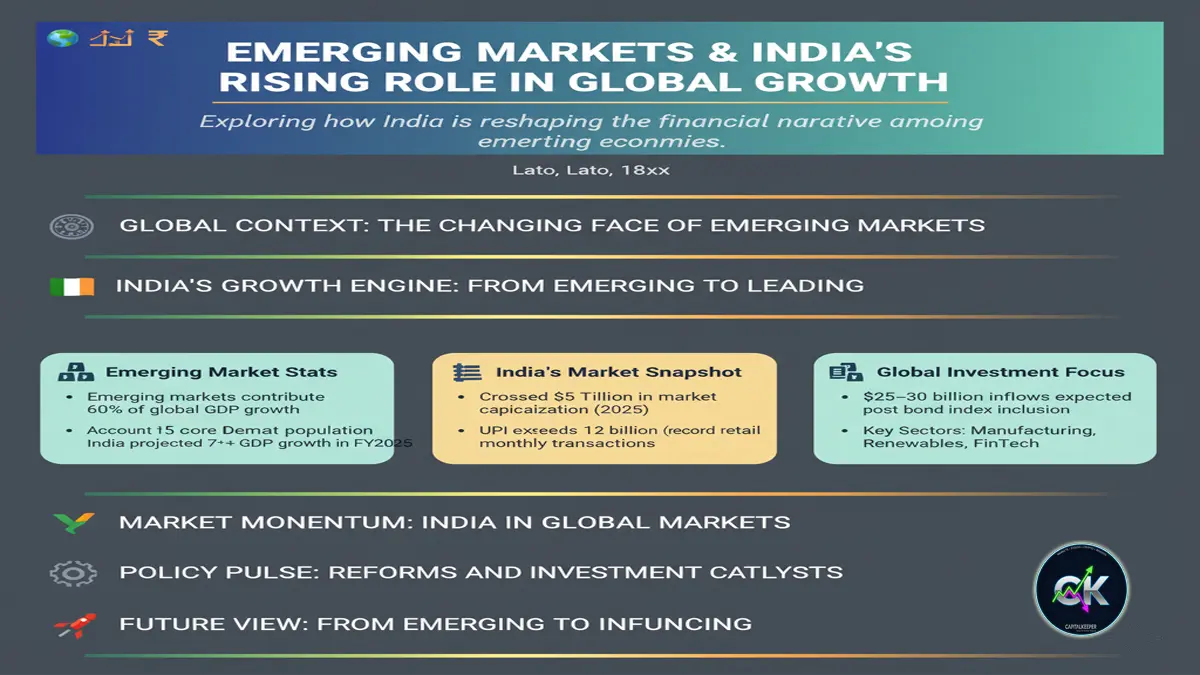

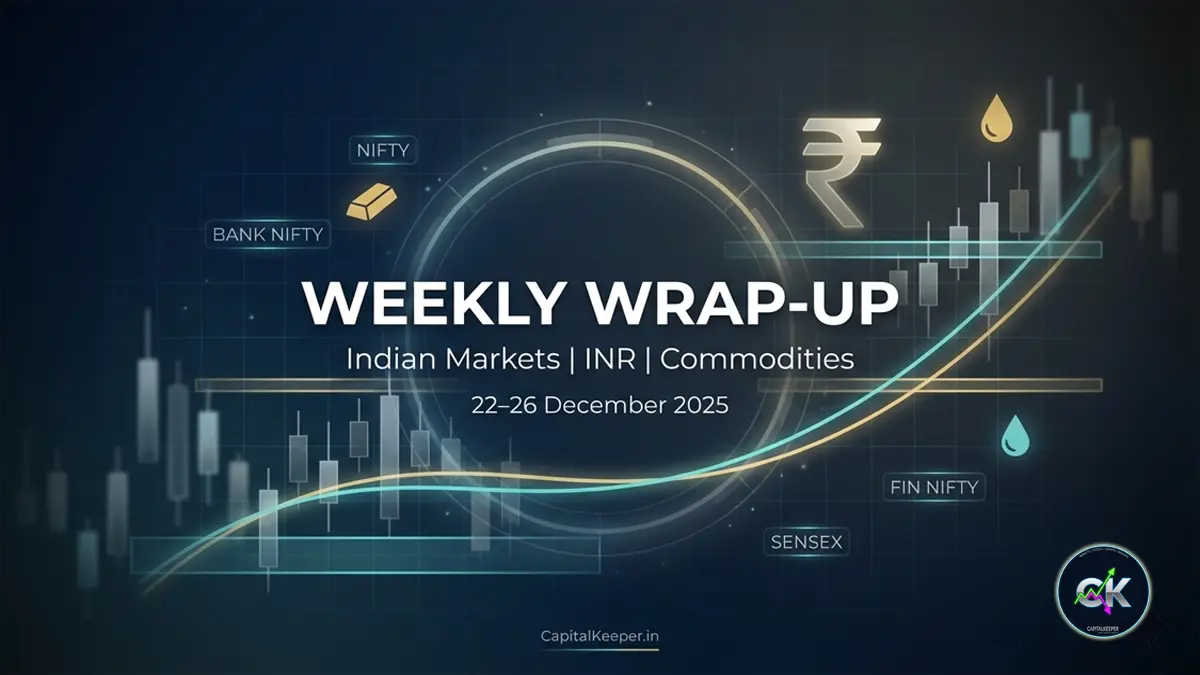
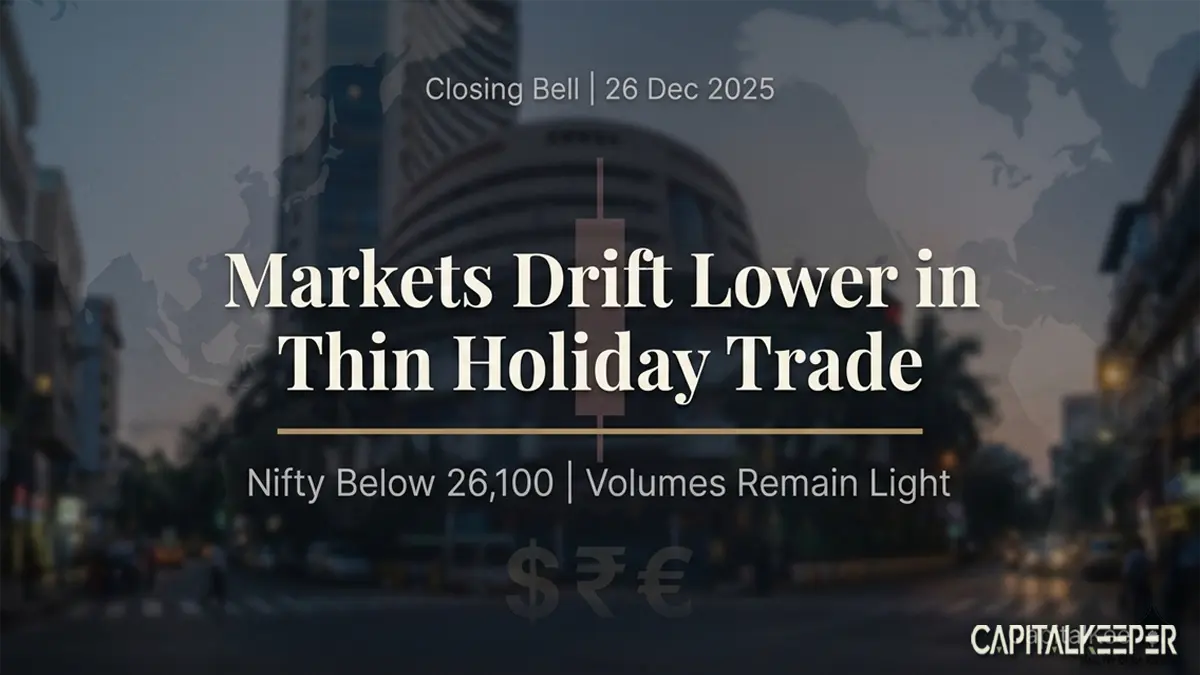

Leave a Reply